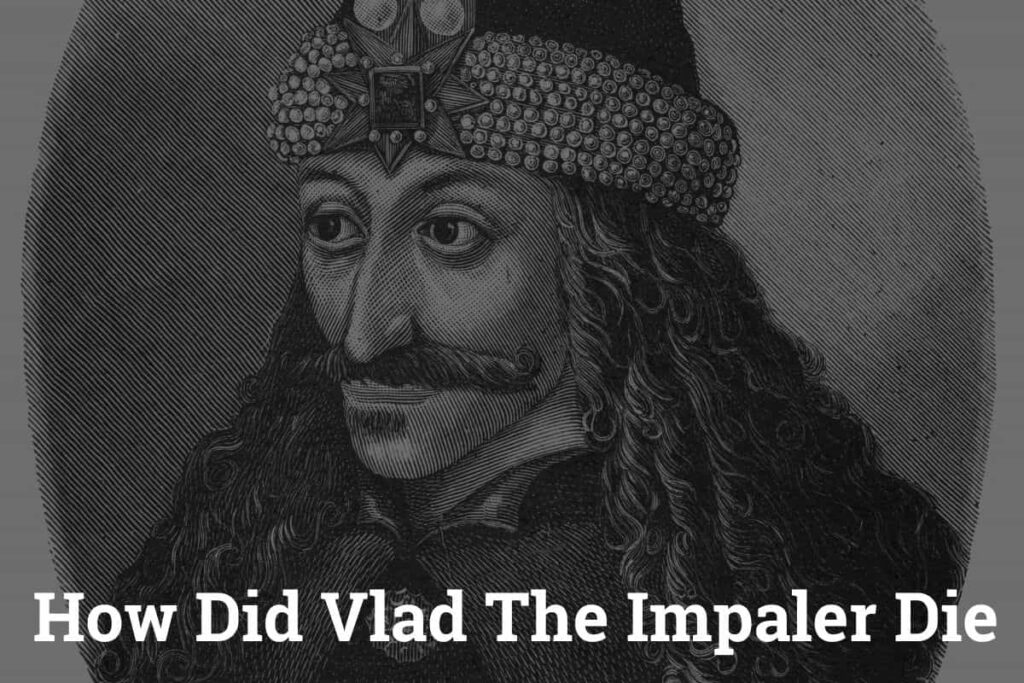Introduction
Vlad the Impaler, a name shrouded in mystery and terror, was a 15th-century ruler infamous for his brutal methods of governance. As history buffs and enthusiasts delve into the life of this enigmatic figure, one question persists: How did Vlad the Impaler die? Join us as we embark on a journey to uncover the truth behind the death of this notorious leader.
Early Life and Rise to Power
Born in the 15th century in Transylvania, Vlad III, commonly known as Vlad the Impaler, was the son of Vlad II Dracul. His early years were marked by turmoil and conflict as he navigated the intricate webs of political intrigue in a volatile region. Vlad’s ascension to power was fraught with challenges, yet his iron will and cunning strategies propelled him to become the ruler of Wallachia, a region in present-day Romania.
Vlad’s upbringing was characterized by the constant threat of invasion from the Ottoman Empire, which had a profound impact on his psyche and governing style. His experiences during this tumultuous period instilled in him a deep-seated desire to defend his homeland at any cost, laying the foundation for his ruthless rule.
Vlad’s Brutal Rule
Once in power, Vlad the Impaler wasted no time in establishing his authority through ruthless tactics. His penchant for impaling enemies earned him a fearsome reputation, striking fear into the hearts of both his subjects and adversaries. Tales of his cruelty spread far and wide, painting a vivid picture of a ruler consumed by his thirst for power and vengeance.
Under Vlad’s iron-fisted rule, Wallachia experienced a period of relative stability, albeit at a gruesome cost. His harsh punishments and draconian laws instilled fear in the populace, quelling dissent and maintaining order through sheer force. However, his brutal methods also garnered him no shortage of enemies, both within and beyond his borders.
The Fall of Vlad the Impaler
Despite his iron-fisted rule, Vlad’s reign was not without its challenges. Faced with opposition from neighboring powers and internal dissent, his grip on power began to wane. The Ottoman Empire, in particular, posed a significant threat to Vlad’s rule, launching multiple incursions into Wallachia in an attempt to assert dominance over the region.
In a dramatic turn of events, Vlad the Impaler was ultimately ousted from his throne, marking the end of his tumultuous rule. His adversaries, emboldened by his defeat, wasted no time in seizing power for themselves, plunging Wallachia into a state of chaos and instability.
How did Vlad the Impaler die?

The circumstances surrounding Vlad the Impaler’s death remain shrouded in mystery, fueling speculation and intrigue for centuries. While various theories abound, historians agree on one thing: Vlad met his demise on the battlefield. It is said that he fell in combat while valiantly defending his homeland against foreign invaders.
Despite his fierce resistance, Vlad’s efforts were ultimately in vain, and he perished amidst the chaos of battle. His death marked the end of an era, leaving behind a legacy steeped in bloodshed and brutality.
Vlad the Impaler’s wife death
Little is known about the fate of Vlad the Impaler’s wife, adding to the mystique surrounding his personal life and relationships. Historical records from the period are sparse, leaving many details of Vlad’s personal life shrouded in mystery.
The Legacy of Vlad the Impaler

Despite his gruesome methods and controversial legacy, Vlad the Impaler left an indelible mark on history. Revered by some as a national hero and reviled by others as a bloodthirsty tyrant, his complex persona continues to fascinate scholars and storytellers alike. From inspiring literary works such as Bram Stoker’s “Dracula” to fueling countless legends and myths, Vlad’s legacy endures through the ages.
Vlad’s impact extends far beyond the borders of Wallachia, influencing popular culture and shaping perceptions of Eastern European history. His name has become synonymous with cruelty and ruthlessness, serving as a cautionary tale of the dangers of unchecked power.
If You Want To Explore More History Visit Historicways
Vlad the Impaler FAQs
Q-Who defeated Vlad Impaler?
Vlad the Impaler was ultimately defeated by forces aligned against him, including neighboring powers and internal adversaries. The Ottoman Empire, in particular, played a significant role in his downfall, launching multiple incursions into Wallachia to assert dominance over the region.
Q-How was Vlad the Impaler buried?
The exact details of Vlad the Impaler’s burial remain uncertain, with some accounts suggesting he was laid to rest in a modest grave, while others claim his body was never found. The mystery surrounding his final resting place only adds to the intrigue surrounding his death and legacy.
Q-How old was Vlad the Impaler when he died?
Vlad the Impaler is believed to have been in his mid-forties at the time of his death, though the exact age remains a subject of debate among historians. Despite his relatively young age, Vlad’s impact on history was profound, leaving behind a legacy that continues to be studied and debated to this day.
Q-Where did Vlad the Impaler live?
Vlad the Impaler primarily resided in Wallachia, a region in present-day Romania, where he ruled with an iron fist. His stronghold, located in the medieval fortress of Poenari, served as the seat of his power and a symbol of his authority over the region.
Q-Did Vlad the Impaler defeat the Ottoman Empire?
While Vlad the Impaler achieved notable victories against the Ottoman Empire, he was ultimately unable to decisively defeat the formidable adversary. Despite his fierce resistance, the Ottomans continued to pose a significant threat to Wallachia throughout Vlad’s reign, ultimately contributing to his downfall.
Q-Was Vlad the Impaler a hero?
Views on Vlad the Impaler’s legacy vary greatly, with some considering him a hero for his defense of Wallachia against foreign invaders, while others condemn him for his brutal methods of governance. His complex persona continues to fascinate scholars and historians, prompting ongoing debate about his true motivations and intentions.
Q-Did Vlad the Impaler have a child?
There is limited historical evidence regarding Vlad the Impaler’s offspring, and the question of whether he had children remains a topic of speculation among historians. While some accounts suggest that Vlad may have had descendants, concrete evidence to support these claims is scarce, leaving the question unanswered.
Conclusion
As we close the chapter on Vlad the Impaler’s life and legacy, one thing remains clear: his story is as captivating as it is contentious. From his rise to power to his dramatic downfall, Vlad’s journey offers a glimpse into a tumultuous period in history, leaving an indelible mark on the annals of time. While the exact circumstances of his death may never be fully elucidated, one thing is certain: the legend of Vlad the Impaler will continue to intrigue and inspire generations to come.



